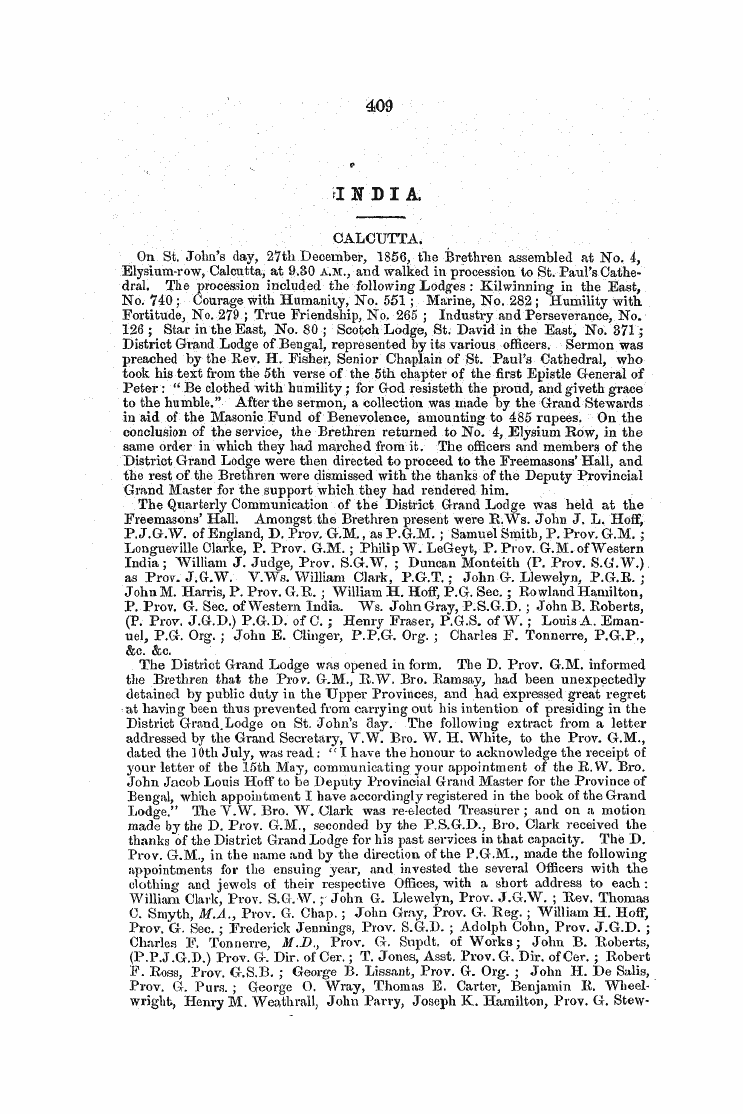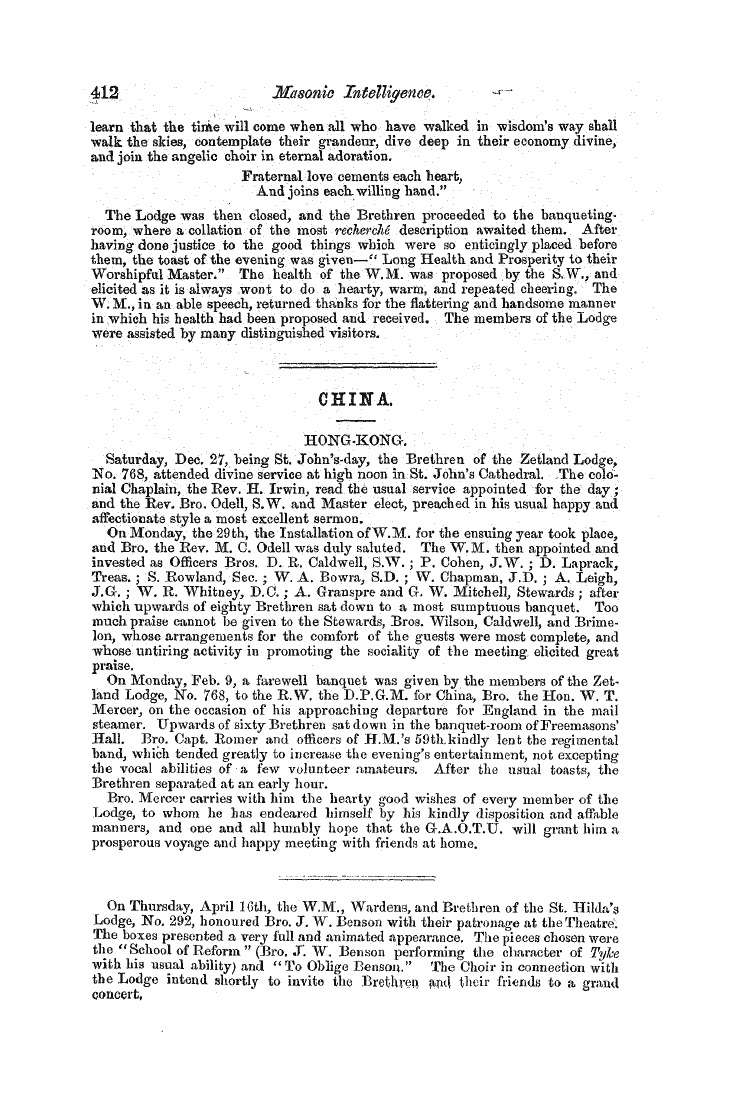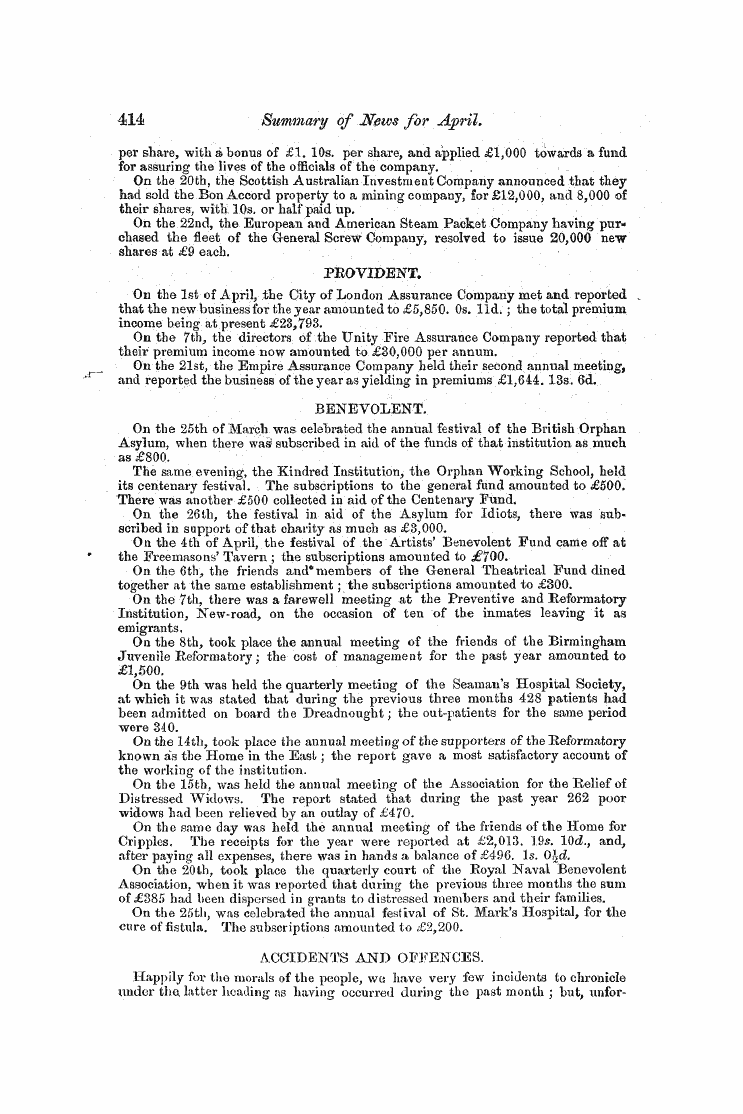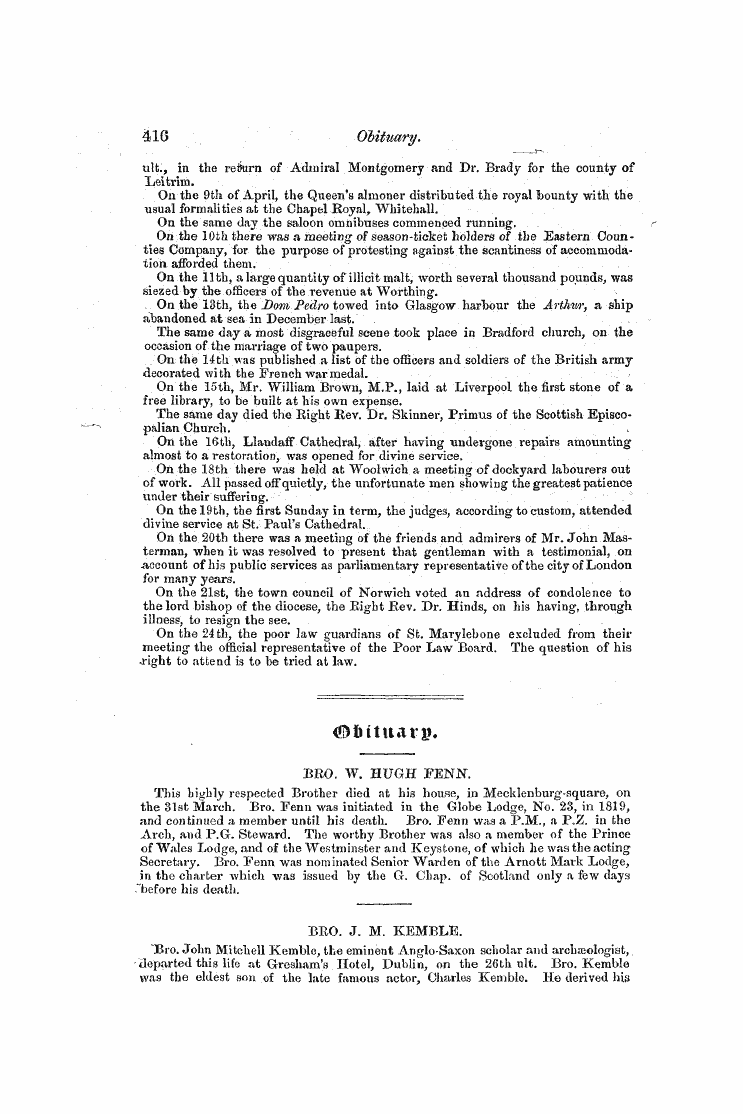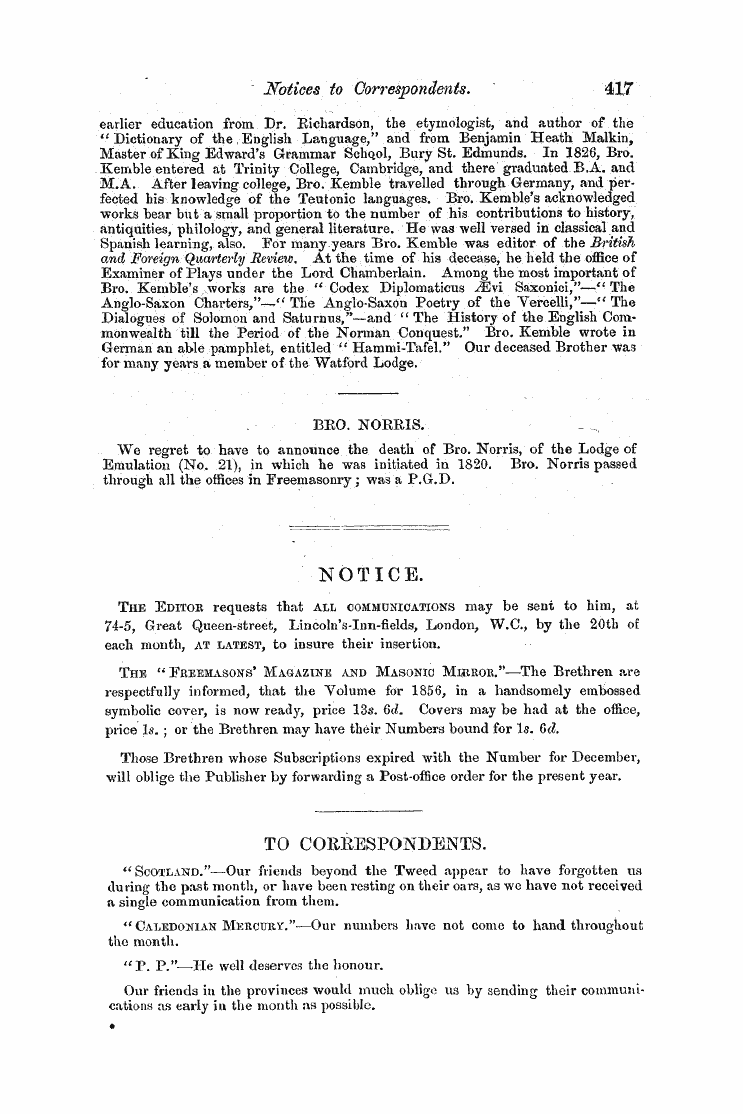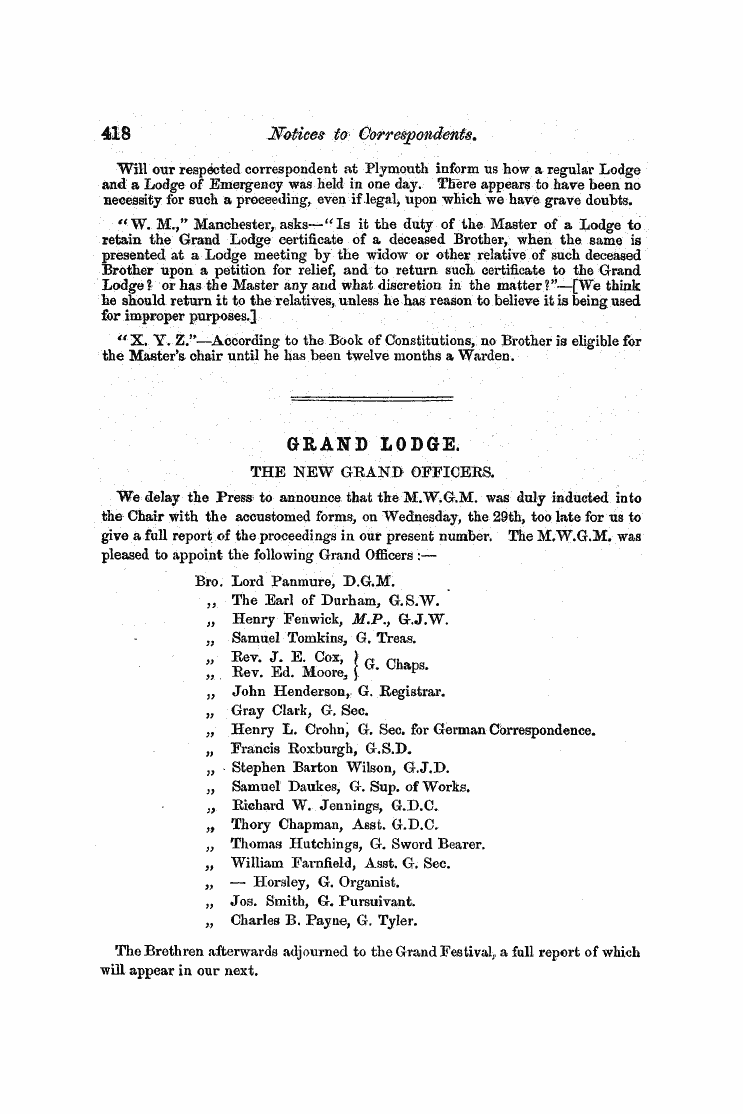-
Articles/Ads
Article THE VISIBLE SYMBOL^ ← Page 4 of 6 →
Note: This text has been automatically extracted via Optical Character Recognition (OCR) software.
The Visible Symbol^
been fully evolved or explained ., notwithstanding the vast multitude of commentators who have laboured at the task , I might call your attention to that beautiful passage in the twelfth chapter of Eeelesiastes , so familiar to every Mason as appropriate to the ceremonies of
the Third Degree ^ and in which a dilapidated building is metaphorically made to represent the decays and infirmities of old age in the human body . This brief but eloquent description is itself an embodiment of much of our Masonic symbolism , both as to the mode and the subject matter .
In attempting any investigation into the symbolism of Freemasonry , the first thing that should engage our attention is the general purport of the institution and the mode in which this symbolism is developed . Let ns first examine it as a whole , before we investigate its parts , as we would first view , as critics , the general effect of a building before we began to inquire into its architectural details .
Looking then in this way at the institution coming down to us , as it has , from a remote age—having passed unscathed , and even unaltered , through a thousand revelations of nations , and engaging in its labours the intellectual and the powerful of all times—the first
thing that will naturally arrest the attention is the singular combination that it presents of an operation with a speculative organizationaa art with a science—the technical terms and language of a mechanical profession with the abstruse doctrines of a profound philosophy .
Here it is before us—a venerable school discoursing of the deepest subjects of wisdom , in which sages might alone find themselves appropriately employed , and yet taking its birth and deriving its first life from a society of artisans , whose only object was apparently the construction of material edifices .
The nature then of this operative and speculative combination is the first problem for us to solve , and the symbolism which depends upon it is the first feature of the institution which we are to develop . Masonry , in its character as an operative art , is familiar to every
one ; as suph it is engaged in the application of the rules and principles of architecture to the construction of edifices for private and public use , houses for the dwelling-place of man and temples for the worship of the Deity . It abounds , like every other art , in the use of technical terms , and employs in practice an abundance of implements and materials which are peculiar to itself .
Now , if operative Masonry had here paused—if this technical dialect and these technical implements had never been used for any other purpose , or appropriated to any other object , than that of enabling its disciples to pursue their artistic labours with greater convenience
to themselves , Freemasonry would never have existed . The same principles might , and in all probability would , have been developed in some other way ; but the organization ., the name , the mode of instruction , would all have most materially differed . But the operative Masons who founded the Order were not content with the mere mate-
Note: This text has been automatically extracted via Optical Character Recognition (OCR) software.
The Visible Symbol^
been fully evolved or explained ., notwithstanding the vast multitude of commentators who have laboured at the task , I might call your attention to that beautiful passage in the twelfth chapter of Eeelesiastes , so familiar to every Mason as appropriate to the ceremonies of
the Third Degree ^ and in which a dilapidated building is metaphorically made to represent the decays and infirmities of old age in the human body . This brief but eloquent description is itself an embodiment of much of our Masonic symbolism , both as to the mode and the subject matter .
In attempting any investigation into the symbolism of Freemasonry , the first thing that should engage our attention is the general purport of the institution and the mode in which this symbolism is developed . Let ns first examine it as a whole , before we investigate its parts , as we would first view , as critics , the general effect of a building before we began to inquire into its architectural details .
Looking then in this way at the institution coming down to us , as it has , from a remote age—having passed unscathed , and even unaltered , through a thousand revelations of nations , and engaging in its labours the intellectual and the powerful of all times—the first
thing that will naturally arrest the attention is the singular combination that it presents of an operation with a speculative organizationaa art with a science—the technical terms and language of a mechanical profession with the abstruse doctrines of a profound philosophy .
Here it is before us—a venerable school discoursing of the deepest subjects of wisdom , in which sages might alone find themselves appropriately employed , and yet taking its birth and deriving its first life from a society of artisans , whose only object was apparently the construction of material edifices .
The nature then of this operative and speculative combination is the first problem for us to solve , and the symbolism which depends upon it is the first feature of the institution which we are to develop . Masonry , in its character as an operative art , is familiar to every
one ; as suph it is engaged in the application of the rules and principles of architecture to the construction of edifices for private and public use , houses for the dwelling-place of man and temples for the worship of the Deity . It abounds , like every other art , in the use of technical terms , and employs in practice an abundance of implements and materials which are peculiar to itself .
Now , if operative Masonry had here paused—if this technical dialect and these technical implements had never been used for any other purpose , or appropriated to any other object , than that of enabling its disciples to pursue their artistic labours with greater convenience
to themselves , Freemasonry would never have existed . The same principles might , and in all probability would , have been developed in some other way ; but the organization ., the name , the mode of instruction , would all have most materially differed . But the operative Masons who founded the Order were not content with the mere mate-




























































